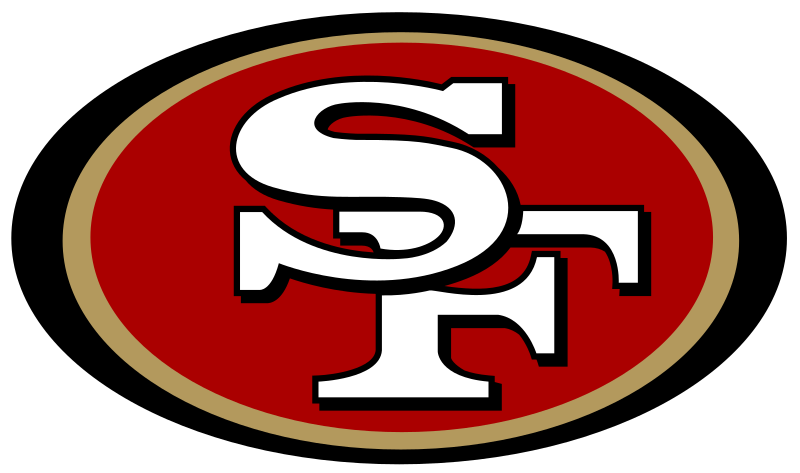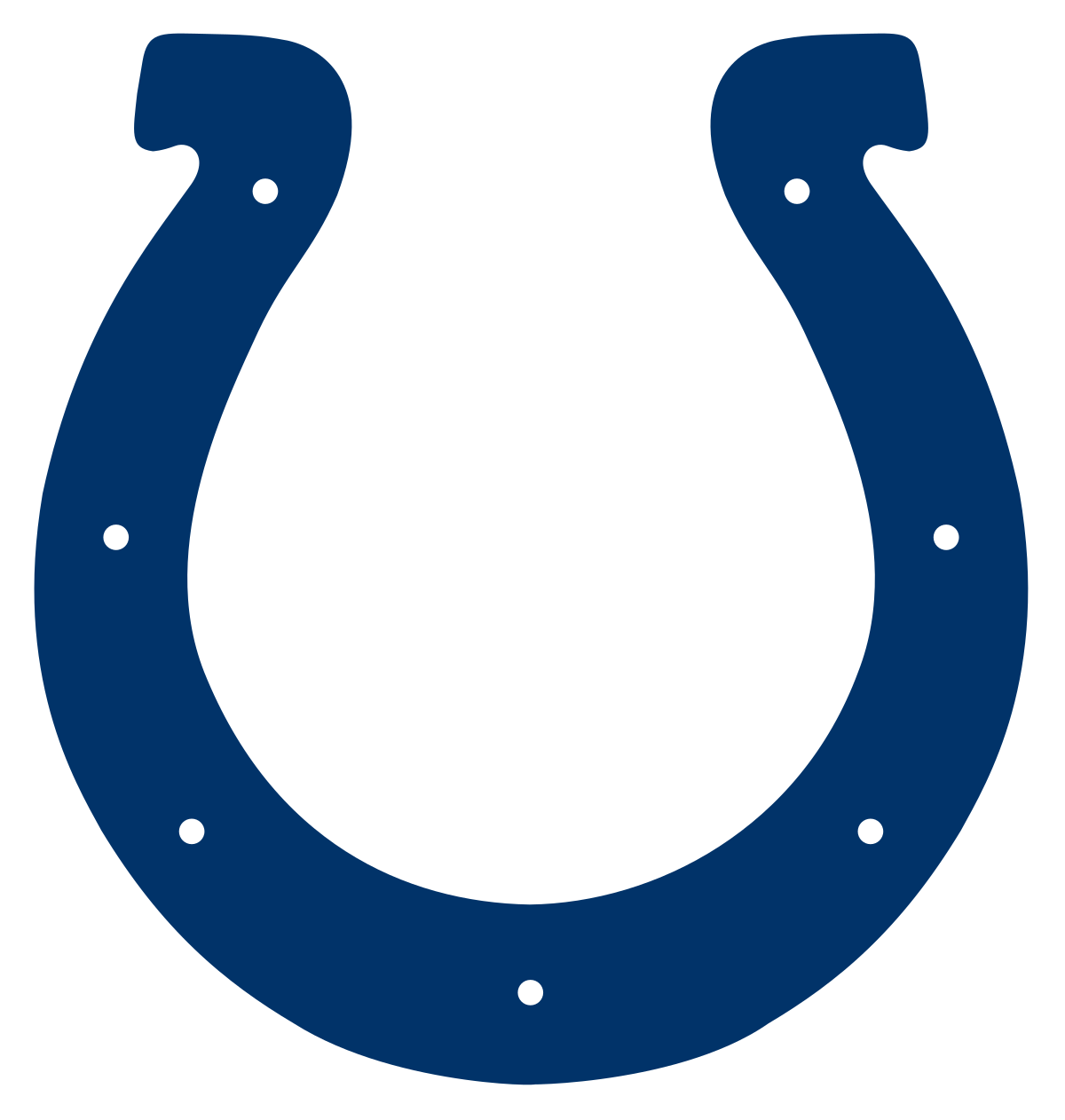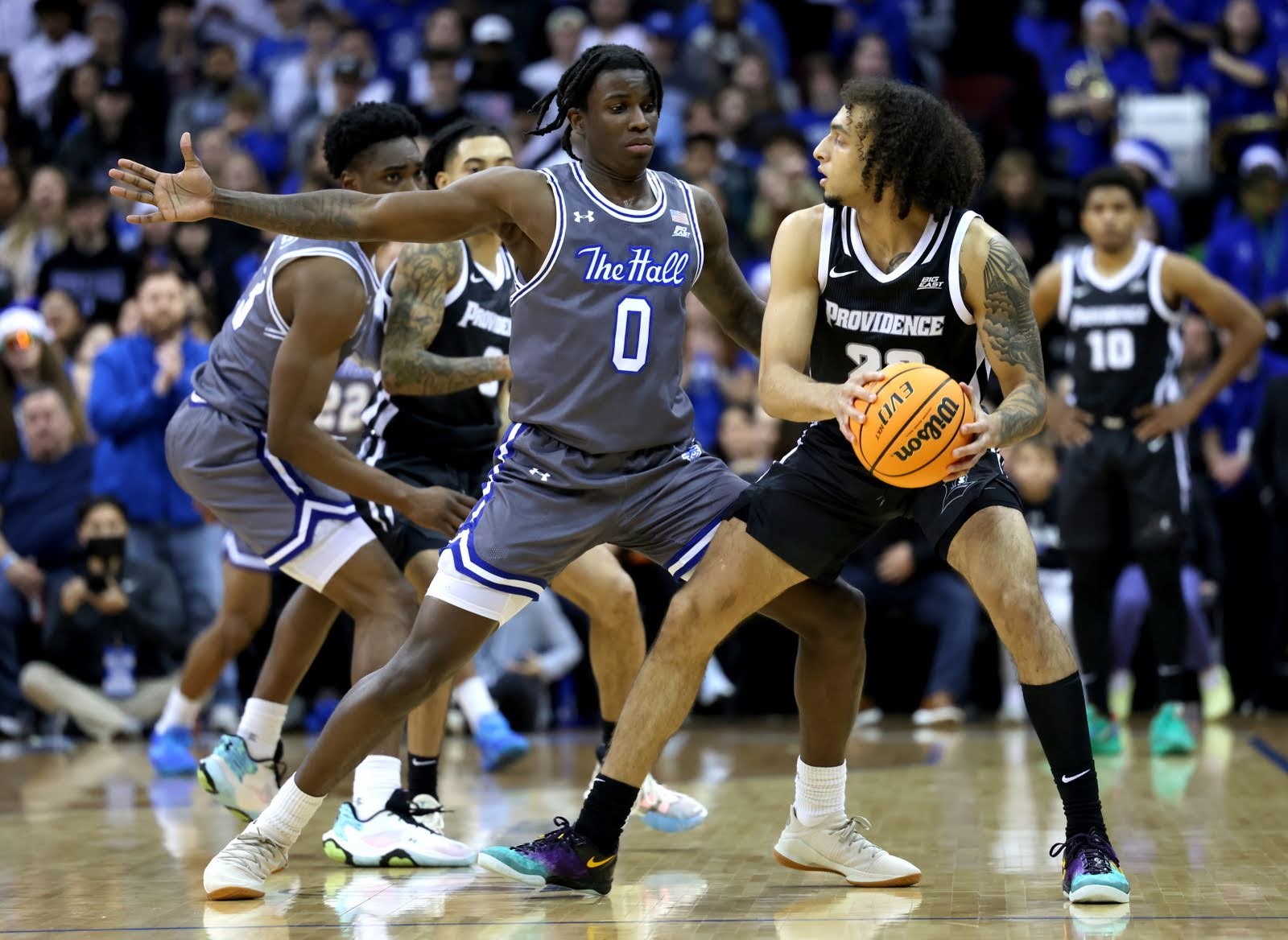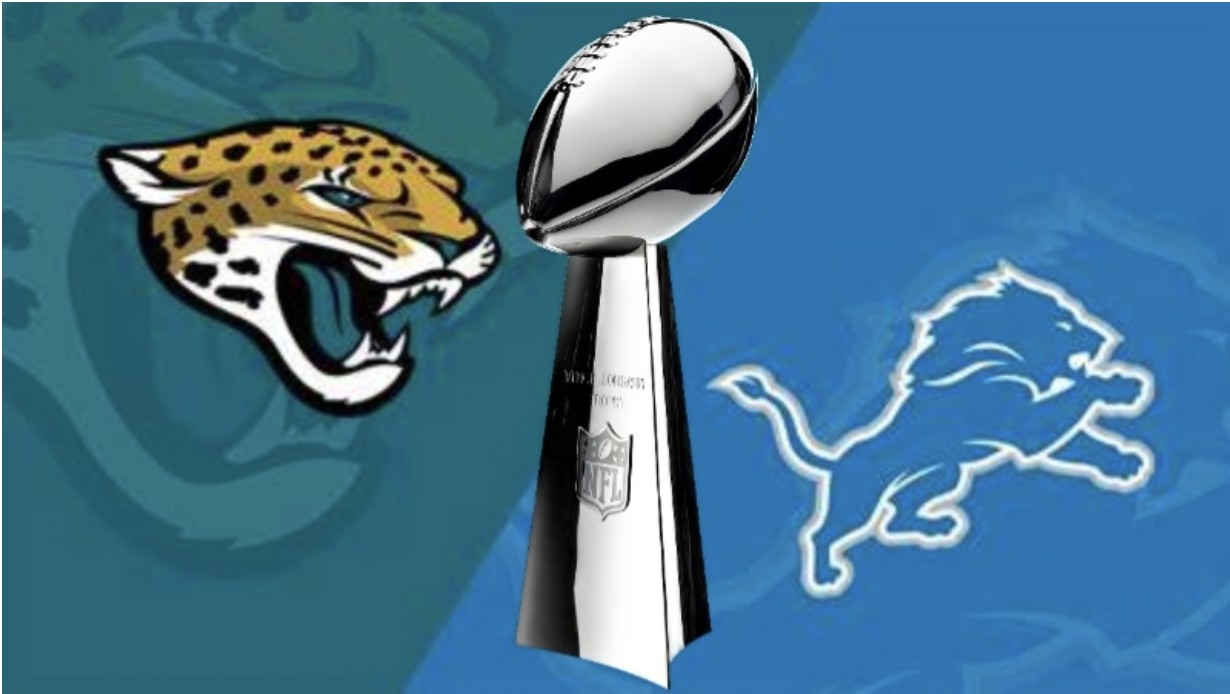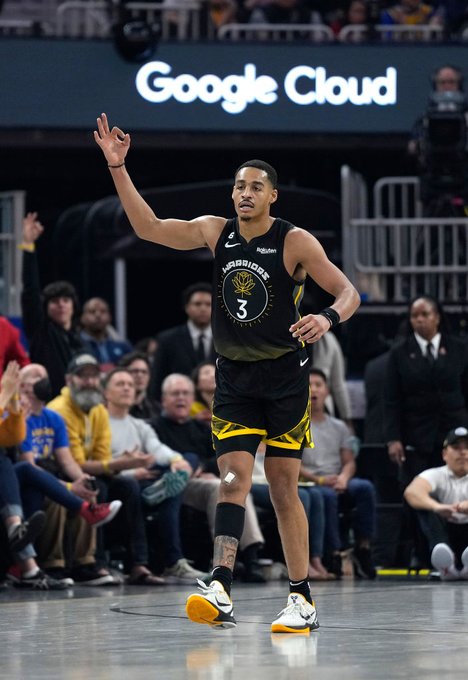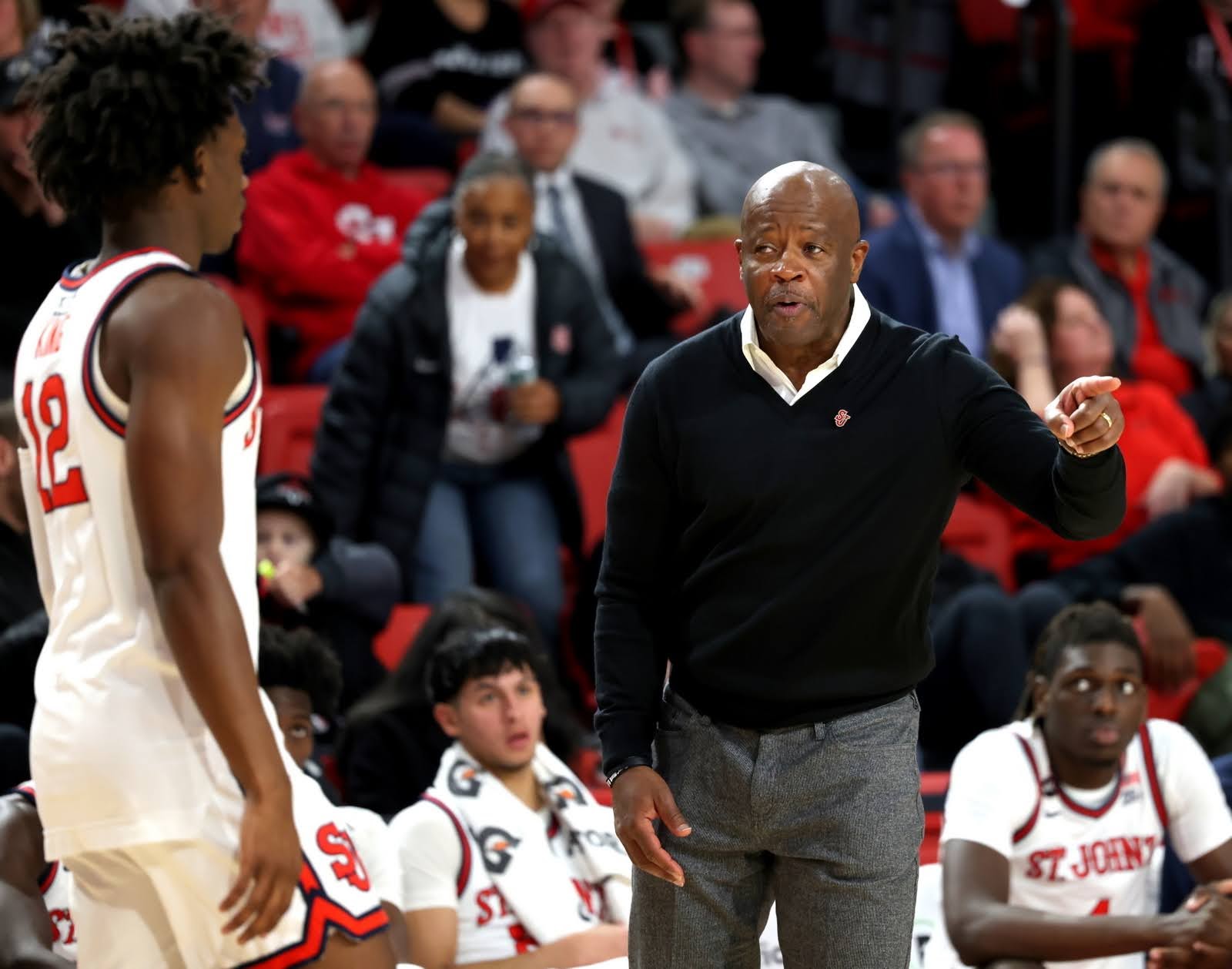COURTESY OF BALTIMORE RAVENS MEDIA RELATIONS DEPARTMENT
One of the priorities of the draft was to get someone to step in for G Marshal Yanda. I was wondering whether you liked the two linemen you got, and whether they have the potential to actually step in, maybe immediately, at that right guard spot? (David Ginsburg) “Certainly, yes, we like both those guys [G Tyre Phillips and G Ben Bredeson], and we were excited about the opportunity to be able to pick both of them when we got them. In terms of stepping in for [Marshal] Yanda, I think it’s going to be a competition. We have guys who are already here on board. Ben [Powers] is coming back. Patrick [Mekari], obviously, played center for us. Matt [Skura] is recovering, and he’s recovering well. So, we have a lot of guys in the building that are going to compete with them, but I certainly think they have the ability and the talent to be right in the mix and competing for that job.”
How impressive was it for LB Patrick Queen to show those types of instincts and football IQ in really his first year starting at LSU? And how is that going to help him translate to the NFL? (Todd Karpovich) “To me, it was impressive just to see a guy, like we said, who is a one-year starter and has played in 12 games as a starter. Now, obviously, he started four games last year, but he sat behind some really good players. And I’ll tell you what; it’s a testament to LSU. We joke that we’ve never drafted one [an LSU player] and I’ve told the stories about getting grief all the time going in there, but I just love the program and love the men that they build down there, and the football players and the football character. They do a great job. Heck, I’ve got four boys, and I’d let them play for Coach ‘O’ [Ed Orgeron] and all the guys down there – [director of athletic training] Jack [Marucci] and [director of strength and conditioning] Tommy [Moffitt] who help really develop those guys. So, I think with Patrick [Queen] you knew you were getting a great kid, and then when you watched the film, you saw the instincts and the speed and athleticism. You were like, ‘Wow, he’s a 20-year old kid who’s showing this right now. What would he have been next year if he would have been another year starter with 12 more, 14 more starts under his belt? How much more instinctive would he be?’ So, I think you project that out forward. He’s a smart kid, he works his butt off, he loves the game and he’s a great character kid. So, you say to yourself, ‘Man, as this guy gets experience in the NFL, he’s just going to get better and better.’ We really think he’s got a high ceiling and also a high floor. So, we’re fired up to see what comes of him, but yes, to me, it’s impressive.”
You talked about RB J.K. Dobbins being kind of a steal there in the second round. When did you kind of feel through the draft that he might actually fall to you during that process? Do you remember kind of going through that stage in that second round and kind of getting the feeling that he could fall to you? (Jamison Hensley) “[I] never really felt like he would fall to us until [pick No.] 54 got turned in. I just never expected him to be there in the sense of him. Now, that being said, in our room there were a lot of [running] backs, and there were a lot of different orders. So, everyone’s order was different, but yes, we thought that he’d be gone. We didn’t think he’d be there, and that’s why we were so excited to get him. But as the [running] backs started coming off the board … I’d say when [Cam] Akers got drafted, it was like, ‘Wow, [J.K.] Dobbins has a legit shot to be there.’ And then, obviously, Philly took [Jalen] Hurts and [A.J.] Epenesa went, so then we knew. But [we] definitely didn’t go into the draft thinking that J.K. Dobbins would be our pick at 55. I didn’t, personally. I thought he was a better player that wouldn’t be there when we were picking.”
Can you compare across drafts? In other words, DT Daylon Mack against DT Justin Madubuike or DT Broderick Washington – can you look at what you got a year before and sort of compare to the guys you’re getting this year? (Kirk McEwen) “I think they’re different types of players. Daylon [Mack] is your true nose tackle, and we drafted him as such knowing that he was a zero-[technique] or 1-technique, maybe he’ll give you some reps as a 3-[technique]. But I think Justin [Madubuike] and Broderick [Washington], they can play nose [tackle] – and they do play nose [tackle] – but they’re probably more of your athletic 3-techniques. And as you saw on the film, especially in Broderick’s case, he played at a lot of 5-[technique] last year. So, [they are] probably different types of guys in terms of positions you evaluate them for. In terms of ability, they are what they are in the sense of where they’re taken. Obviously, we took them. We saw Justin as a third-rounder and Daylon as a fifth-[rounder] and Broderick as a fifth-[rounder]. That’s where we got them, I should say. But we’re excited to get all three of them, and I think what you’re going to have is three young guys that are going to push each other. And I think you create competition by having three talented players all in the same room fighting for the same playing time. So, [I’m] excited to see what comes of it, and I’m really hoping all of them answer the challenge and step up and make each other’s game better.”
Obviously, everyone who is going to get drafted has physical abilities that are exceptional. It sounded like, from listening to you, that so much of it was the discipline to properly use them. When you guys are looking at players, is that one of the first things? (Pete Gilbert) “Yes, I think when you look at guys, you have to look at a guy how you evaluate a guy, and that’s the great thing about our staffs being together for so long – our coaching and scouting staffs being together. We’re in sync. We look at a player and evaluate him for our team and how he fits our team. And then we bring the coaches in, and they validate it, or we’ll get into discussions like, ‘I don’t know if he’s a fit.’ But we try to … Every grade we put on a guy; this is what we think he is. And then, certainly, when you look at the players, you want to see disciplined players. You want to see, especially defensive players, offensively too … But our scheme is such a defined scheme in the sense of being disciplined, maintaining your gap integrity, playing together and as a result playing as one. So, when you find guys on film that do the right thing over and over and over and understand gap integrity and understand technique, you get excited about them.”
Back to LB Patrick Queen. You mentioned how you have to, more than an experienced college player, project – project his growth. What’s an honest risk assessment in doing that, especially for such a high pick? And, I’m trying to remember – and you’ll remember ahead of me on this – what other guys have you picked so high with such little starting experience, and if you can recall how that worked out? (Mark Viviano) “I’d have to actually have a list in front of me. In terms of the projection, I think what you’re projecting is how much better he’s going to be. With a guy like Patrick [Queen], there’s not a rawness to his game. There’s not a … When you take a guy who’s maybe a little bit more raw and not polished, then you’re having to project that the coaching, and the players’ ability to process and learn, and develop the specifics of the position – then you’re having to project more. With a guy like Patrick, you’re just projecting that he’s going to be even better. Like, next year he’d be a Top 10 pick or a Top 15 pick versus a Top 28 pick. There’s a risk with every player, first round all the way down to seven. And you can take a four-year starter versus a one-year starter. I think what you really try to grab a hold of is how is the guy as a kid, first and foremost? How is he as a talent, which is what we’re evaluating on film? That’s the easy part. And then, the character, the makeup, the work ethic, the intelligence. So, you talk to all those sources, and when you hear positive feedback, you’re like, ‘Man, I’m seeing this on film? I’m seeing this type of production, this type of athleticism, these type of reactions on film, and he’s this good of a kid and this good of worker.’ Then you feel that the bar is really high for him.”
You were talking a little bit earlier about how guys fit. And now that you’re a couple years into QB Lamar Jackson, this offense that is quite unique compared to the rest of the league … How has that impacted your overall evaluation of offensive linemen these last couple years? (Luke Jones) “John [Harbaugh] has mentioned it; we want to be big and physical up front. So, there’s definitely a body-type and a mentality that we’re looking for with offensive linemen. That’s not to say an undersized guy can’t play for us. Patrick [Mekari], who started at center for us, was 308 pounds [and] Ben [Powers] was 307 [pounds] coming out. So, they aren’t necessarily huge guys, but when you watch them play, they play physical, and they play strong. So, it’s probably more the core strength and the power than it is the size. Now, ideally, the bigger the better, but you can find a player who may not be as imposing physically, but plays with the core strength, and the power, and the control. If you look at a guy like [Marshal] Yanda, he was probably never over 315 [pounds] ever in his career, but he was so strong. He had those vice grip hands and the core strength. Even when he was 307 [pounds], he was moving guys off the ball because he had the core, the leverage and the mentality. So, that’s what we look for. I’d say that’s the biggest thing we look for in terms of offensive linemen – that physical mentality. And obviously, we’re running the ball a lot, so we want guys that can come off [the line] and knock you back. The bigger guys, you can see it a little bit more on. The smaller guys, you have to look for it, and maybe it’s not as common, but they’re out there.”
You mentioned G Marshal Yanda and G Ben Bredeson earlier. Watching the film on them, you kind of see some similarities in their game. How much will you be looking for a direct replacement [for Yanda] with Ben Bredeson? (Matthew Stevens) “I definitely wouldn’t tag any guy as Yanda’s direct replacement. We have to get in, get working, and let them all fight it out on the field. I think the things that you like about Ben, like I mentioned, the core strength, the balance, the competitiveness, the intelligence, those are the things that are going to give him an opportunity to come in and compete for the role.”
With regard to projecting players – and you’ve been doing this a long time. You’ve seen a lot of college players come into a rookie camp, training camp, and then their first seasons. Is there a time when you see what you saw in college on the NFL stage, and you kind of know that this is going to work, or it’s not going to work? Is there a time when projecting-wise, you kind of say, ‘Uh-oh or OK?’ (Shawn Stepner)”There’s no definitive answer for that. I think I understand the question. Some guys take longer than others; some guys do. And some guys get it right away. We’ve drafted players in the second round that have taken some time, and then they develop into a really good player. We’ve taken players in the first round that you have to wait on a year or two to really get going. We’ve taken guys in the fifth round that come in and start in Year Two or Year One. I think about a [former Ravens’ S] Dawan Landry going way back. We got him in the fifth round, and he just was so physical, instinctive and intelligent, that he was able to jump in and play the game quickly. So, there’s a timeline that’s not definite for all players. It’s individual to each specific player in terms of them getting things down, them understanding the scheme, understanding how we do things and adjusting to the speed of the game. So, each guy is different, and hopefully we have a lot of guys that can acclimate pretty quickly, but only time will tell.”
With WR James Proche, as you mentioned, he’s not a blazer, but he had 12 TDs as a junior and 15 [TDs] last year. What does he have that allowed him to score that much in college? Do you look at him as a guy who can be a real red zone threat for you guys? (Cliff Brown) “He can score, like you saw, in a couple different ways. He has the deep ball, and then obviously, the slants and the back shoulders. I think what allows him to be the player that he is, is just his feel and obviously, his hands. He’s a really good athlete in terms of route-running ability, and he does a good job of stemming guys open and knowing how to influence the defenders in off-coverage, or even pressed up. [He uses] that subtle little jab step to give himself just enough spacing in the back of the end zone, or on the slant, or coming out of the break. He just knows how to work himself open. I think that’s what he did at SMU, and I think that’s one of the traits that he’ll carry forward with him.”
When we talked to LB Malik Harrison after the draft, he mentioned that the coverage and the scheme at Ohio State really didn’t allow him to drop into coverage as much there. In terms of evaluating a player like that, how do you see a certain side of a guys’ game when maybe a particular scheme or a particular team doesn’t really put them in a specific situation? (Andrew Gillis) “I think with Malik’s [Harrison] case – or really a lot of different guys – but sometimes you have to wait until he gets to an All-Star game where he’s in more man-[coverage] type settings, or deeper zone drops. With him, you saw enough of it – you did. It’s true, they had him walk up to check the ‘back, and he would release out with the ‘back. So, you saw the speed and the length for him to be able to run with ‘backs and tight ends vertical. But in terms of the man-to-man aspect, you kind of have to wait on All-Star games a little bit to see how they do down there in Mobile, (Ala.), or [the] East-West [Shrine Bowl]. And then sometimes it’s just, again, the projections. You’re watching the athlete maneuver and you say, ‘Ok, he’s smart, he’s instinctive, he understands concepts, and he can bend, and adjust and move.’ You can project that he’ll be good, but you can’t, again, definitively say, ‘I think this guy is going to be a great cover ‘backer,’ when you don’t see it. You have to … It always helps to fall back on video or live evidence.”
I think I meant to ask you guys this before the draft, but about how many games or reps do you need to see of a player before you have a pretty good sense of what kind of player they can be? Is there a sliding scale for how much of a prospect they are or the position that they play? (Jonas Shaffer) “In terms of reps, it depends. It depends on the position. Sometimes it depends on the opponent, who they’re facing. If you’re watching a guy from a small school and you’re watching him just dominate, you say, ‘Ok, that’s good,’ but I’d like to see him against better competition. So then, you’ve got to wait until the guy gets invited to the Senior Bowl, hopefully, and goes against some better talent. And again, the position, you may watch a safety, or a corner and just be like, ‘Man, I just watched two games and I don’t know what this guy is,’ because he’s just not getting any action. Yes, he’s running with the guy and covering, but he’s not getting enough action. You need to see more of his tackling. The same with wideouts – you can see a guy getting open, but the ball isn’t getting throw to him. You’ve got to hunt and peck for those exposures. But then there’s some players where you’ll watch a guy, and it really doesn’t matter the round, you’ll say – and I think it comes from years of experience as scouts and evaluators – that this guy is a backup, this guy is a starter. I see this guy being a good, tough, physical offensive lineman. I see this guy as an athletic, talented, playmaking wideout. It’s just what he’s putting on film, and then you kind of put it in your memory banks and go back [and say], ‘This guy reminds me of a certain player, and he went in the third round, and this is what he became.’ It’s a little bit of matching guys up based on history, but it’s also just doing the film. You can watch some players and know really, right away … [New York Giants running back] Saquon Barkley didn’t take long. He didn’t take long at all, but I watched probably seven games on him. But I probably knew what he was after halfway through the first game, but he’s just so much fun to watch. (laughter) Some guys you just keep watching for fun, other guys you keep watching to find the answer.”
I thought it was super interesting when you showed the film of LB Patrick Queen intercepting that pass against Alabama, and you mentioned that it was right before the half. How do you balance guys who, sort of, just have a knack for just making plays against all the intricacies of scouting? And that play in particular, did that change your perception? Because we did see that film of LB Patrick Queen almost getting the ball that WR Devin Duvernay caught – did that change your perception of him as a cover linebacker? (Aaron Kasinitz) “I wouldn’t say it changed the perception of him. I think when I watched that, the first time I saw that play was live. I was watching the game live on TV, and I’m like, ‘Wow, that’s a heck of a play.’ They showed it in like two or three different angles, and I say, ‘Wow, that’s a really good job reading it.’ You’re kind of like, ‘Wow, this kid has got some really good instincts and he looked athletic doing it.’ And then, when you watch the film and you see him moving around and the athleticism on display, you say to yourself, ‘Maybe they don’t put him in a lot of man-[coverage] situations,’ but again, like I showed you against Florida, he had that rep where he was right there and leveraged the ‘back properly, and then against Alabama where he made the PBU [pass breakup]. When you try to identify a coverage ‘backer, yes, you’ve got to get some exposures, but you’ve got to keep looking for the opportunities. Truthfully, a lot of ‘backers in college aren’t probably skilled enough to step up at the NFL level and be a ‘cover ‘backer,’ and the ones that are drafted, you have a little bit more conviction on. But a lot of guys play in college that you definitely wouldn’t ID as a ‘cover ‘backer.'”
Back to WR James Proche – he spoke yesterday with real passion about returning kicks. I’m wondering, is that an easily scout-able skill from the college level to pro? Is it a unique ability? And I ask that, because I remember last year WR Marquise Brown went back for a couple of punts in the preseason and it didn’t work out so well, [and we] haven’t seen him do it again. Talk about that skill and what that means for him, and if it does translate to the NFL. (Mark Viviano) “I’ll say this, and by no means … I’m a cap athlete – my athletic career ended when I walked across the graduation stage in high school. One of the hardest things to do is catch a punt, I think. That ball, especially if it turns over – even if it’s not turned over – if it’s tail-dragging, if it’s drifting away from you, you’ve got to project where it’s going to go. Meanwhile, you got guys running down the field at you. And if that thing turns over, I think it’s like a missile BB coming down at you. It’s one of the hardest things I’ve ever tried to do, personally … And I never stepped into the batters’ box versus a 98-mph fastball … But I’m not going to lie, it’s hard. It’s a unique skillset, and it’s something he’s really good at. When you evaluate returners, a scout … And we have Chris [Horton] look at them as well, Chris Horton, our special teams’ [coordinator], and [former special teams coordinator] Jerry [Rosburg] did it for the years prior. You really just try to see how he really tracks the ball and gets under it. You’ve got to catch it first, right? You see how he tracks the ball, how he gets under it. Does he catch it square? Is he catching it away from his body? On short kicks or long kicks, is he able to get to the spot, get under it, and square up and make a play? And then, obviously, what he does afterwards. Some guys are kind of explosive, electric speed runners, where if they catch it, they’re an instant-threat score. Other guys show the vision, the strength, the balance – and that’s probably more like James [Proche]. He’s really instinctive; has really good vision. Again, he catches it really secure, but then he gets up field quick. He doesn’t waste time trying to go east and west. He gets up field and he has that vision and balance where he can make guys miss along the way and can get positive yards. The first thing you’re looking for when you’re looking at returners; is he catching it easy and is he catching it clean? Because if they can’t do that, it’s really hard to say the guy is going to be a returner for you.”
I’m watching you go through WRs Devin Duvernay and James Proche in terms of the way they play, and obviously their hands are incredible, they play physical and they play tough. I imagine you saw a lot of those things with former Ravens WRs Demetrius Williams, Marcus Smith, David Reed and other guys over the years. What did you learn from them that now when you’re looking at wide receivers you say, ‘OK, who is going to work and who isn’t?’ Obviously, you can’t predict the future and sometimes it doesn’t matter. (Pete Gilbert) “I’ll say this: Both those guys certainly had some talents that you liked and some ability of those guys you mentioned. Like David [Reed], he actually caught the ball really well and he was tough as could be. He got bit by the injury bug a little bit after we drafted him. But, the first thing you look for, and I think we’ve learned it over the years, is you’ve got to catch the ball. You’ve got to have good hands and you’ve got to be able to catch the ball. Then the other thing is the feel and the awareness. One thing for wide receivers that is probably the biggest challenge is the mental aspect of the game, because again, you’re getting a lot more coverages thrown at you, a lot more defensive concepts and it’s happening much faster. So, they’ve got to be able to process that fast, and we feel like those two guys can do that. We feel like that’s what makes them really good football players, and I mentioned a couple times talking about them, just their feel for the game and their ability to react quick, and break things off and settle in the right spot, or bend the route the right depth. As all the parts are moving, they’re able to adjust their game, and I think that’s critical for wideouts to have success. If you’re thinking about that, you’re not thinking about catching the ball, and I think that might be one of the things that gets [to] talented wideouts. Kids with talent who do catch the ball pretty well, but then as the game gets too fast for them, they’re thinking about everything else and they’re forgetting the most important thing, which is catching the football.”
After drafting your third Big Ten player in the first four rounds, John [Harbaugh] mentioned how he has talked to [his brother, Michigan head coach] Jim [Harbaugh], and how Jim kind of gives him some input on players. I know you get so many voices, and you have scouts, and you talk to a lot of people. How much of an asset is it to have a head coach’s brother at one of these major programs? (Jamison Hensley)”It’s definitely an asset. And I think it’s not just … His brother certainly, but it’s all the relationships that come because of it. Our relationship with Michigan is basically … John’s relationship with Jim is basically my relationship with Jim, and then my relationship with Jay [Harbaugh] and everyone else on that staff and our area scouts. There’s a connection, obviously, where they know what the Ravens are, and we’ve done a lot of clinics with their staff, so they know what we’re about and we know what they’re about. But then if you just forget the Michigan perspective, like you said, multiple Big Ten players – which by the way is hard for an SEC guy – but we get it, and I was happy to do it. But they have a feel for the rest of the league and the conference, so you get their opinions, ‘Hey, this guy, one thing I thought is he plays like a Raven.’ So, it’s good. Those relationships exist beyond just us and Michigan. They’re probably not as well-documented, but a lot of coaches on our staff have a lot of good relationships throughout the college ranks, as well as our scouts. So, I think that’s one of the critical things for us, and one of the things we really pride ourselves on and push is developing relationships out in the college ranks. Our scouts do a phenomenal job throughout the year, spending time getting to know staffs and talking to them. And then they get to know what we’re about. So, I think when you have that relationship developed, you’re able to walk in to a close, trusted source [who says], ‘This guy is your type of guy,’ walking in the door before you even put the film on. Or you watch the film and say, ‘God, I love him.’ [And they say], ‘I knew you would, he’s your type of guy.’ So, they know what we’re about and it’s great, and we push our guys all the time – our scouts – to keep building those relationships, because it’s critical.”
I talked to [Baylor head coach] Dave Aranda yesterday and he mentioned first that LB Patrick Queen was probably LSU’s most improved player over the course of the season. When I asked him what kind of defense or play style would be best for Queen, he said a defense just like the Ravens. I guess, could you comment on both of those? Did his development surprise you in any way over the course of the season going from not a starter to defensive MVP? And I guess the similarities schematically between what LSU’s defense asked him to do and what the Ravens might ask him to do? (Jonas Shaffer) “In terms of his development, surprised? I would say no, because again, he’s a junior. So, our first evaluation was really this year. What was impressive about it was as I took you through [the film] – I kind of took you through it in order – you saw him get even faster, and faster, and faster. He was fast at the beginning, but then you saw his reads get even more precise. His reaction was quicker. So, it was exciting to me to see it, not necessarily surprising, because you see the physical gifts he has. In terms of fitting our scheme; he plays fast, he plays aggressive, he runs to the football, he’s athletic. So, he’s got that versatility that we love. You see him as a blitzer, you see him in coverage, you see him play downhill, you see him make plays out to the sideline. We think that versatility is going to be very beneficial for him fitting our scheme, definitely.”



